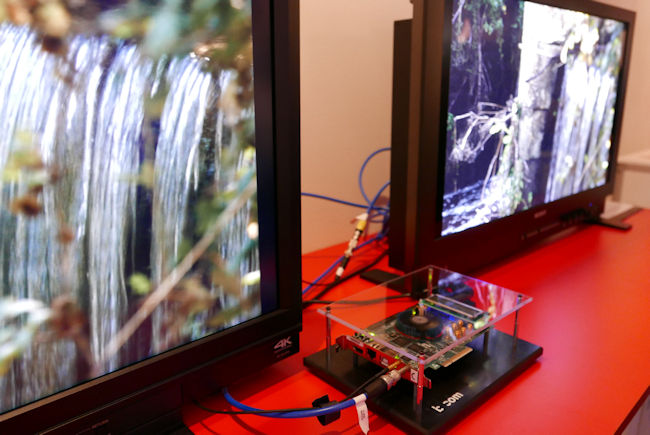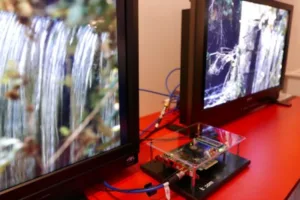B<>Com is a French technology institute, based in the high tech area of Rennes (in the same suburb as Technicolor’s R&D facility), with satellite sites in Lannion and Brest, also in Brittany. It has forty company partners and investment from the French government.
At the show, we concentrated on the demonstration of SDR to HDR real-time conversion. The institute has developed an ip core that it is willing to license and it also has software-only (CPU or GPU) versions for lower resolution versions. Although there is no question that individual attention by a colourist is the optimum way of performing conversion, this is not an option in live broadcasting and may not be economic where a lot of library content is being used. Further, many production facilities are likely to have a mixed range of SDR and HDR cameras and sources. This means a need for real time conversion.
 b<>com’s HDR SDR Conversion. Image:b<>com
b<>com’s HDR SDR Conversion. Image:b<>com
B<>Com’s demonstration looked good. One of the key issues is that simply changing brightness levels means that colours tend to de-saturate, which reduces the impact of the HDR content and for this reason, the B<>Com algorithm adds some colour back into the signal, although it maintains the colour intent within the original Rec. 709 content gamut. The key point is to ensure that this is ‘just the right amount’ of additional colour. For more details on the technology, you can download a pdf file.
Chris made a video of the technology when it was shown at NAB, but at that time, the process was not running in real time.
Intel was showing the technology on the segment of its booth at IBC reserved for the Altera FPGA business that it has bought.
The group was also showing technology in spatial audio for VR, video over IP and forensic watermarking of HDR.

